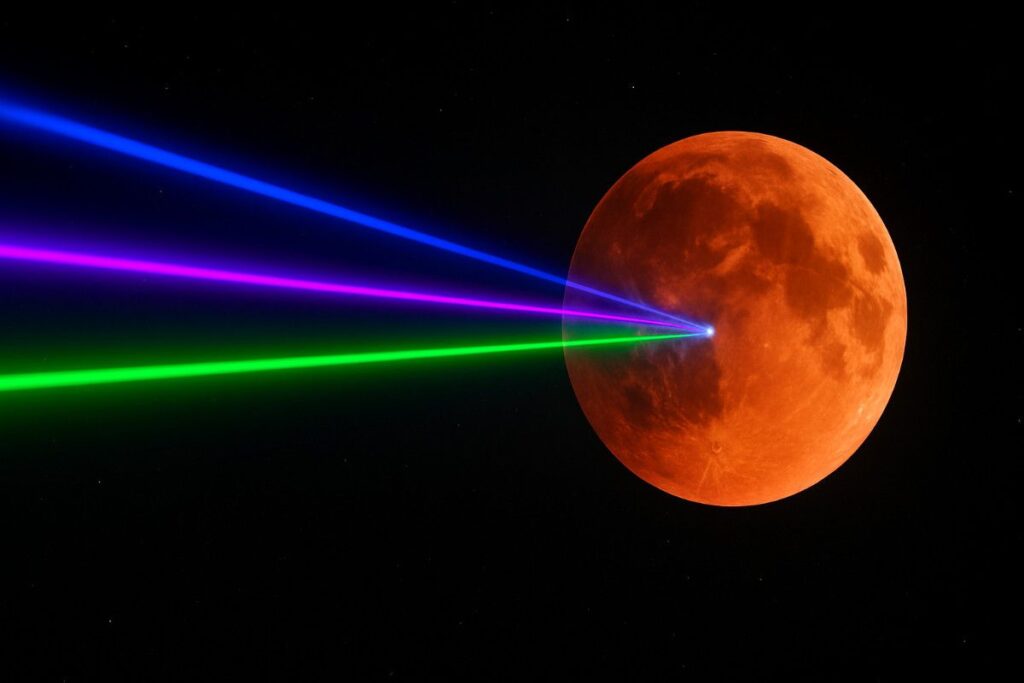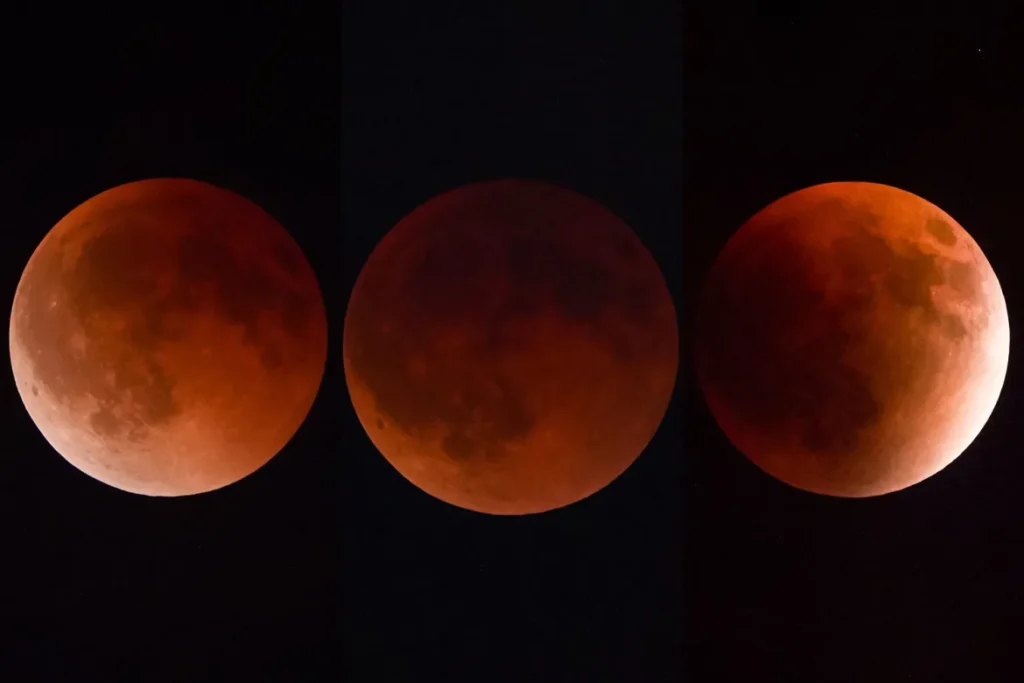
A rare celestial event dazzled stargazers worldwide as the total lunar eclipse on September 7, 2025, painted the moon a deep red hue, popularly known as the Blood Moon. This spectacular astronomical event was visible across India, Asia, parts of Europe, Africa, and Western Australia, making it one of the most awaited skywatching moments of the year.
What is a Blood Moon?
A Blood Moon occurs during a total lunar eclipse, when the Earth comes directly between the Sun and the Moon, casting its shadow on the lunar surface. Unlike solar eclipses, which require special glasses to watch, lunar eclipses are safe to view with the naked eye, binoculars, or telescopes.
The moon appears red or coppery because sunlight bends and scatters through Earth’s atmosphere. Shorter blue wavelengths scatter away, while longer red wavelengths pass through, creating the eerie crimson glow.

Lunar Eclipse September 2025: Timings in India
Skywatchers in India had a perfect opportunity to observe the Blood Moon eclipse today, although cloudy skies spoiled the view in some regions.
- Eclipse start time in India: 9:57 p.m. (September 7, 2025)
- Total eclipse begins: 11:01 p.m.
- Maximum eclipse (peak time): 11:42 p.m.
- Total eclipse ends: 12:23 a.m. (September 8, 2025)
- Partial eclipse ends: 1:45 a.m.
This makes it the longest total lunar eclipse visible in India since 2022 and the first full Blood Moon seen across the entire country since July 27, 2018.
Live Lunar Eclipse: How to Watch
For those who couldn’t witness the event due to monsoon clouds, the Indian Institute of Astrophysics and astronomy enthusiasts streamed the eclipse live on social media and observatory platforms. Similar live moon eclipse 2025 coverage was also available via NASA live streams and global space agencies.
Can You Eat or Drink During a Lunar Eclipse?
Many traditional beliefs suggest avoiding food, water, or outdoor activities during a Chandra Grahan (lunar eclipse). However, scientists clarify that there are no medical or scientific reasons to avoid eating or drinking. Observing a lunar eclipse is completely safe and poses no health risks.
Why is the Moon Red Today?
The red moon today is due to Rayleigh scattering—the same phenomenon that makes sunsets red. During the eclipse, sunlight travels through Earth’s atmosphere, filtering out blue light and allowing only red light to reach the Moon’s surface.
When is the Next Lunar Eclipse in India?
- Next total lunar eclipse visible from India: December 31, 2028
- Next penumbral/partial eclipse: Several smaller eclipses will occur before then, but none as dramatic as the September 2025 Blood Moon.
For solar eclipse enthusiasts, the next Surya Grahan (solar eclipse in India) will also occur in 2025, making this a landmark year for skywatchers.
FAQs on Today’s Blood Moon Lunar Eclipse
Q. What time is the eclipse today in India?
The eclipse started at 9:57 p.m. on September 7 and ended at 1:45 a.m. on September 8, 2025.
Q. Can we drink water during a lunar eclipse?
Yes. There is no scientific restriction against drinking water or eating food during a lunar eclipse.
Q. Is it safe to watch a lunar eclipse with the naked eye?
Yes, unlike solar eclipses, lunar eclipses are safe to view without protective glasses.
Q. Why was the moon red today?
Because of Earth’s atmosphere scattering blue light and allowing red light to reach the lunar surface
Conclusion
The Blood Moon 2025 total lunar eclipse gave skywatchers in India and across the world a breathtaking celestial show. Whether observed live under clear skies or streamed online, the red moon spectacle once again reminded us of the beauty and science of our cosmic neighborhood.
Mark your calendars—if you missed this one, the next total lunar eclipse in India will occur on December 31, 2028. Until then, keep looking up and enjoy the wonders of the night sky.
